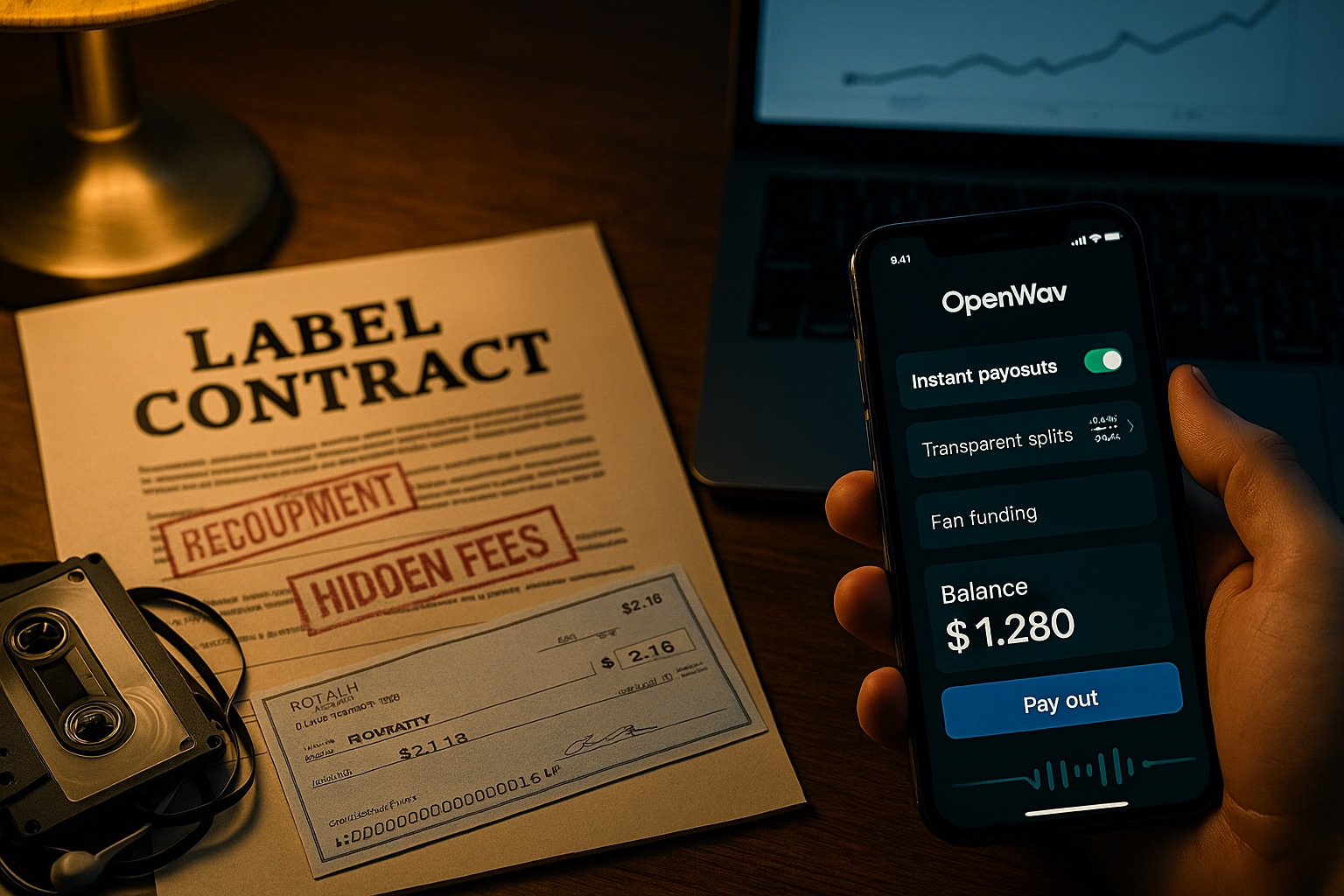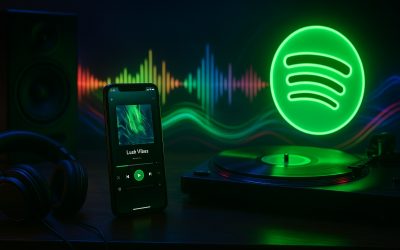When Grammy Award-winning musician Wyclef Jean says the music industry is broken, people listen. But when he teams up with a startup to actually do something about it, that’s when things get interesting.
Jean has joined OpenWav as chief creative officer, and their mission is pretty straightforward: give power back to artists who’ve been getting squeezed by streaming services for years. Think of it as a direct line between musicians and their biggest fans, cutting out the middleman who’s been taking most of the profits.
The Streaming Problem Nobody Talks About
Here’s a number that’ll make you wince: on Spotify, artists need to hit 1 million streams just to earn $3,000. Let that sink in for a moment. One million plays for three grand.
OpenWav co-founder and CEO Jaeson Ma put this in perspective at the recent Fortune Brainstorm Tech conference. If you’re a new artist trying to make a living, you’d need millions upon millions of streams just to pay rent. No wonder Cardi B was out on the street selling CDs and vinyl records through TikTok – it wasn’t a publicity stunt, it was basic survival economics.
“If you’re a new artist, the amount of streams that you have to accumulate to get $10,000 is literally a rip-off,” Jean explained. “So now you have a constant revolt.”
The “1,000 True Fans” Strategy
Here’s where OpenWav’s approach gets clever. Instead of chasing millions of casual listeners, they’re focusing on something more sustainable: true fans who actually want to support their favorite artists.
Ma breaks down the math beautifully: “If you have 1,000 true fans that give you $10 a month – which is a Starbucks coffee times 1,000 – that’s $120,000 a year as an independent music artist.”
Think about that for a second. Rather than needing millions of streams that pay pennies, an artist just needs 1,000 people willing to spend the cost of a coffee each month. It’s the difference between shouting into the void hoping someone notices and building a real community of supporters.
What OpenWav Actually Does
The OpenWav app launched over the summer with a comprehensive approach to artist-fan relationships. It’s not just another music streaming service – it’s more like a complete business platform for independent musicians.
Core Features:
- Direct music releases and exclusives
- Fan community building tools
- Merchandise sales with zero upfront costs
- Concert and event hosting
- Ticketing with 80% revenue going to artists
The platform essentially becomes an artist’s entire business infrastructure. When you buy a concert ticket through OpenWav, you automatically join an event chat (think Discord for music fans) where you can directly interact with both the artist and other attendees.
The AI Assistance Angle
OpenWav isn’t just about cutting out streaming service middlemen – they’re also planning to use AI tools to help artists make smarter business decisions. Think of it as having a digital manager that suggests tour locations, merchandise ideas, and even helps create album art or lyric videos.
Jean and Ma are particularly enthusiastic about AI’s creative potential. They point to producers like Timbaland who are already using AI music services like Suno as creative tools, treating them like advanced samplers to expand their musical possibilities.
“What we see with AI is that AI is going to be your best friend as an artist,” Ma explained. These AI features are planned for the app’s “phase two,” but the foundation is already being built.
How This Compares to Existing Solutions
OpenWav isn’t operating in a vacuum. Spotify has been talking about launching its own super-fan platform, complete with early concert ticket access and premium features. The difference is focus: Spotify would target major artists, while OpenWav is specifically going after independent and emerging musicians.
The startup also faces competition from other fan-focused platforms, but Ma argues that OpenWav is unique in offering everything in one integrated experience. Rather than using separate platforms for merchandise, ticketing, fan communication, and music distribution, artists get it all in one place.
The Bigger Industry Context
This direct-to-fan approach reflects broader frustration with how streaming economics work. Artists aren’t just competing against other musicians anymore – they’re fighting algorithms that don’t necessarily reward musical quality and platforms that take the majority of revenue.
Ma referenced a recent complaint from singer Lizzo about the lack of a “song of the summer” this year, arguing that current algorithms aren’t designed to surface great music – they’re optimized for platform engagement and retention.
Real-World Applications
For independent artists, OpenWav represents a fundamentally different business model. Instead of hoping to go viral on TikTok or rack up millions of Spotify streams, they can focus on building sustainable relationships with dedicated fans.
The math is compelling: 1,000 fans paying $10 monthly generates $120,000 annually. That’s a living wage for many artists, achieved through direct fan support rather than algorithmic luck.
What Artists Actually Get
Revenue Control:
- 80% of ticket sales revenue
- Direct merchandise sales without inventory
- Fan email and phone number ownership
- No reliance on streaming service payouts
Community Building:
- Direct fan communication channels
- Exclusive content distribution
- Event-specific chat communities
- Personal fan relationship management
Business Tools:
- AI-powered tour planning suggestions
- Merchandise design assistance
- Album art and video creation tools
- Data ownership and analytics
Can 1,000 True Fans Replace Million-Stream Goals
The big question is whether this model can scale. Finding 1,000 true fans willing to pay $10 monthly is challenging, especially for new artists without existing followings.
However, OpenWav’s approach acknowledges a fundamental truth: sustainable music careers are built on dedicated fan relationships, not viral moments or algorithm manipulation.
Looking Forward
OpenWav launched on iOS and Android over the summer, positioning itself as an alternative to the traditional music industry pipeline. Whether it can actually deliver on its promise to “give power back to artists” remains to be seen.
But the core insight is solid: artists need sustainable income streams, and true fans want to support the musicians they love. If OpenWav can facilitate those relationships effectively, they might actually solve some of the music industry’s economic problems.
The real test will be whether independent artists can successfully build those communities of 1,000 true fans and whether the platform can provide enough value to justify the monthly subscription model.
For musicians tired of chasing streaming numbers that don’t translate to real income, OpenWav offers a different path forward. Whether that path leads to sustainable careers or just another platform disappointment depends on execution and artist adoption.
But given the current state of music industry economics, it’s definitely worth watching how this experiment unfolds.




Post a comment